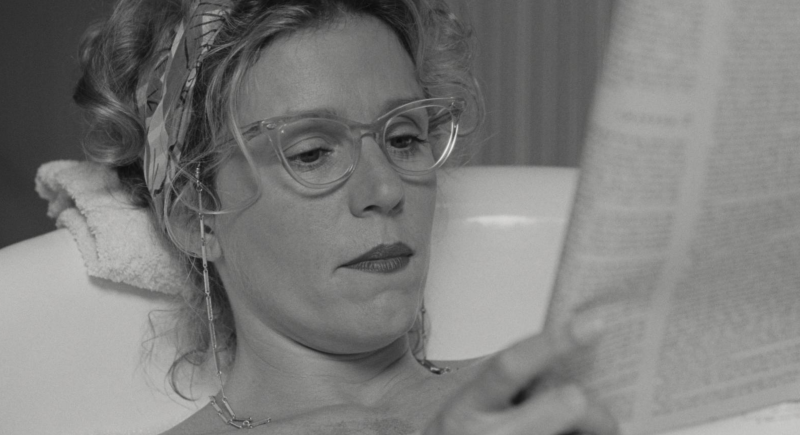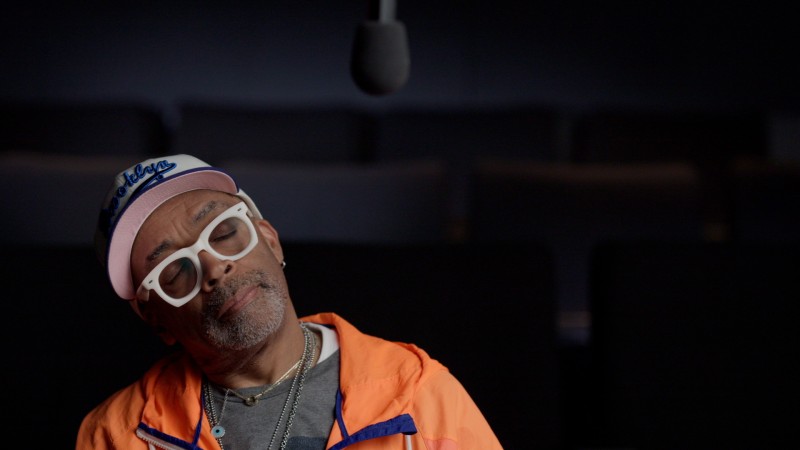Fatal Women and the Fate of Women

No woman ever looked more conscious of her fatal power than Ava Gardner in her first scene from The Killers (1946). Posing herself artfully at a piano, near a lamp that makes her dark locks and black satin dress shimmer like an oil slick, she has her back to the smitten boxer Swede (Burt Lancaster) but knows exactly the effect she is having on him. His dazed fixation makes the scene funny, and her knowing performance as Kitty Collins gives it a darker comic edge. In a sweet, girlish voice—polished by Hollywood speech lessons that expunged Gardner’s southern accent—she talks about how she hates brutality and could never bear to see a man she cared about being hurt. Nothing could be further from the truth: she likes to see men suffer, and her selfishness leaves deeper bruises than a fighter’s fists. She’s fully revealed in her last scene, when she crouches over a man who’s just been shot and demands that he use his last breaths to falsely exonerate her—prompting a great, sorrowful rebuke from Sam Levene’s police lieutenant: “Don’t ask a dying man to lie his soul into hell.”
What is the defining characteristic of the femme fatale, that film noir archetype of the scheming woman who preys on men? Even more than greed or coldheartedness, it might be deceit: a virtuosic ability to manipulate men with lies and playacting. The femme fatale is spawned by male anxiety—not prompted by women’s wartime emancipation, as many have argued, but arising from the age-old fear of being fooled by women, and the misogynistic belief that they are inherently duplicitous and inscrutable. This shapes the way actresses play femme fatales: they are often giving a performance of a performance, enacting a charade of feminine sweetness and frailty that satisfies the expectations and desires of their marks. In Eddie Muller’s Dark City Dames, Jane Greer recalls that when she played the enchanting thief, liar, and killer Kathie Moffat in Out of the Past (1947), director Jacques Tourneur wasted no time on the character’s psychology, simply instructing her: “First half—good girl. Second half—bad.” He told her to play it “impassive,” conveying the depths of her evil through a shocking depthlessness. A woman like Kathie or Kitty almost doesn’t seem to have a real self beneath the layers of lies: she is, as a disgusted Jeff Bailey (Robert Mitchum) tells Kathie, “like a leaf the wind blows from one gutter to another.”
Such women play the damsel in distress to appeal to men’s chivalry—as Kitty turns on the tears, getting Swede to take the rap for her when she’s caught with stolen jewelry. She morphs in an instant from a laughing sophisticate to a frightened little girl; she is a different person in every scene, seductive or sullen or demure, adopting the guise that will suit her purposes. In the end, when she comes face to face with Edmond O’Brien’s insurance detective Riordan, who has been excavating her past, she launches into yet another whopper, starting off shamelessly: “I want you to believe something . . .” But some truth slips out amid the lies. In this account, she describes how easily she tricked Swede, and when Riordan confronts her with this double cross, she gives a carefree little shrug and gloating smile. This tiny moment of pleasure may be Kitty at her worst, and her most sincere.
Some actresses could precisely calibrate degrees of duplicity, like Barbara Stanwyck in Double Indemnity (1944). One of cinema’s great slayers of hypocrisy, Stanwyck crafts an act that’s as false as her character’s platinum wig, as transparent as her white sweater, yet convincingly deadly, all while letting us glimpse the dark pit of corruption beneath her glossy allure.
Now and then, noir gave actresses a chance to play something rarer than sweet-voiced, two-faced sirens: women who don’t even try to hide their rottenness. Honesty gives these misogynistic caricatures an exhilarating, liberating charge; they earn shock laughs with their brazen awfulness. Ann Savage’s Vera in Detour (1945), a relentless harpy who is endless fun to watch, set the standard followed by dames like Hazel Brooks in Sleep, My Love (1948), a sexy pinup with the personality of an ice pick. Perhaps the most unabashedly venal woman in film noir is Lorraine Minosa (Jan Sterling) in Billy Wilder’s corrosive masterpiece Ace in the Hole (1951). Lorraine refuses to play the role expected of her as the wife of a man trapped in a collapsed cave. When the flamboyantly cynical reporter Chuck Tatum (Kirk Douglas) wants to photograph her at church praying for her husband’s safety, she sets him straight: “I don’t go to church. Kneeling bags my nylons.” (Wilder credited this line to his wife, pointing out that he wouldn’t know from nylons.)
Jan Sterling was a classically trained actress from a patrician background who perfected a nasty sneer, a grating whine, and a look of voracious vacancy that made her the definitive “what’s in it for me?” girl. Even in the tawdriest guises, Sterling retained an astringent hauteur, suggesting a lifetime of resentments steeped into a venom as harsh as the bleach she used on her hair. She never flinches from Lorraine’s ugliness, but she doesn’t play it up as campy villainy, either: she gets into the skin of this coarse, sullen, grasping bitch and makes her the most real person on-screen. She’s very funny, nailing Lorraine’s cheap sarcasm and ingenuous vanity, slinging her lines in a voice that could strip paint off a wall. But it’s far from a one-note performance: her eyes shine with pure, childlike joy as she contemplates the money piling up in the cash register, then glisten with tears of shock and humiliation when Tatum slaps her.
Lorraine is not very bright—she never quite understands the brilliant, morally conflicted Tatum, or why it’s a bad idea to show how happy she is at cashing in on her husband’s misfortune—but in a world of people who lie to themselves and everyone else, her inability to dissemble feels radical. It’s why Tatum hates her so much. She reflects back at him the worst of himself, and despite his cynicism he can’t face the truth, so he takes out his own mounting guilt on her. Their mutual hatred is mingled with attraction, open on her side and channeled into violence on his. Alone in a dusty, bleak dawn soon after his arrival, they take each other’s measure. Watch how the dynamic between them suddenly shifts at the end of this scene: after carelessly airing her own greed and rattlebrained solipsism, she triumphantly reveals that she sees right through him, and knows his heart is as arid and rocky as hers. Poor Leo Minosa, buried in a cave, is in a warmer, softer place than he was in his marriage to Lorraine.
Marriage and family life tend to get short shrift in film noir. A wife often hovers in the background, keeping her husband’s supper warm, lending a sympathetic ear to his troubles, sleeping in the other twin bed—rarely rising above one-dimensional domesticity. An exception, and one of the most real and moving marriages in noir, comes in The Breaking Point (1949), Michael Curtiz’s tough-minded, razor-sharp adaptation of Hemingway’s To Have and Have Not. John Garfield’s Harry Morgan is no glamorous loner like Bogart’s in the earlier Hawks version of this story; he’s a stubborn, frustrated working-class guy trying to support his family and hold onto his fraying independence and self-respect. He is caught between two women: his loyal but careworn wife, Lucy (Phyllis Thaxter), and Leona (Patricia Neal), a good-time gal who seductively needles him. But these two women go so far beyond the standard dichotomy of nice girl/femme fatale—a trope that noir overuses but also questions—that the cliché dissolves.
Phyllis Thaxter had the wholesome, freshly scrubbed prettiness typical of postwar Hollywood housewives, but here she takes that template and stays within the lines—Lucy is supportive, virtuous, always in the kitchen—while ridding it of any false notes. Her performance is plain and clear like water, as honest about the strain of poverty and domestic bickering as it is about how physically excited this woman still is by her husband. Lucy has plenty of spine, but she’s also insecure enough to dye her hair platinum when she fears Harry is falling for the sexy Leona. The scene where she comes home with her new hairdo, nervous and embarrassed, to face her daughters’ disapproval and her husband’s bewilderment, cuts you to the quick.
When she finally confronts Harry, who has been sucked into crime, she pierces his self-justifying, tough-guy façade with scathing insight: “You’ve got that stubborn, stupid look you always get when you know something’s wrong but you’re going to do it anyway.” This is a film that decisively rejects the myth of heroic self-reliance (“A man alone ain’t got no chance,” Harry finally realizes), and it is Lucy who breaks through the wall of male pride to make him acknowledge his need for her.
With her sardonic, drawling voice and lushly knowing smile, Patricia Neal brings a more common noir sound and sensibility into the film’s workaday setting; she represents the easy way out. But when Harry finally succumbs to her persistent come-ons, their long-awaited tryst turns out to be an awkward fizzle. Her reaction allows a glimpse into her bitterness and regret (“I don’t like to think I’m not exciting, I haven’t got much else”), the way she gets through the “other woman” racket by letting everything roll off her, only to find that perhaps she’s incapable of feeling or inspiring real feeling. She’s as proud of her irresistibility as Harry is of his toughness, and in this moment of unexpected candor they both face the limits of their power.
Honesty is the one thing Lucy and Leona have in common; in this scene, the only time they meet, they spar cattily but find a small common ground of respect. They both see more clearly than Harry, who has crawled into the comfort of a bottle.
Women in the postwar era faced shrinking options and stifling constraints; film noir lets us see them pacing their cells and calculating how to make the most of their slender leverage. But in noir, everyone’s power, however fatal it may first appear, is dwarfed by the force of bad choices and indifferent fate. The real dichotomy is, perhaps, not between good and bad women—or tough and not-so-tough guys—but between those who know this and those who haven’t found it out yet.






